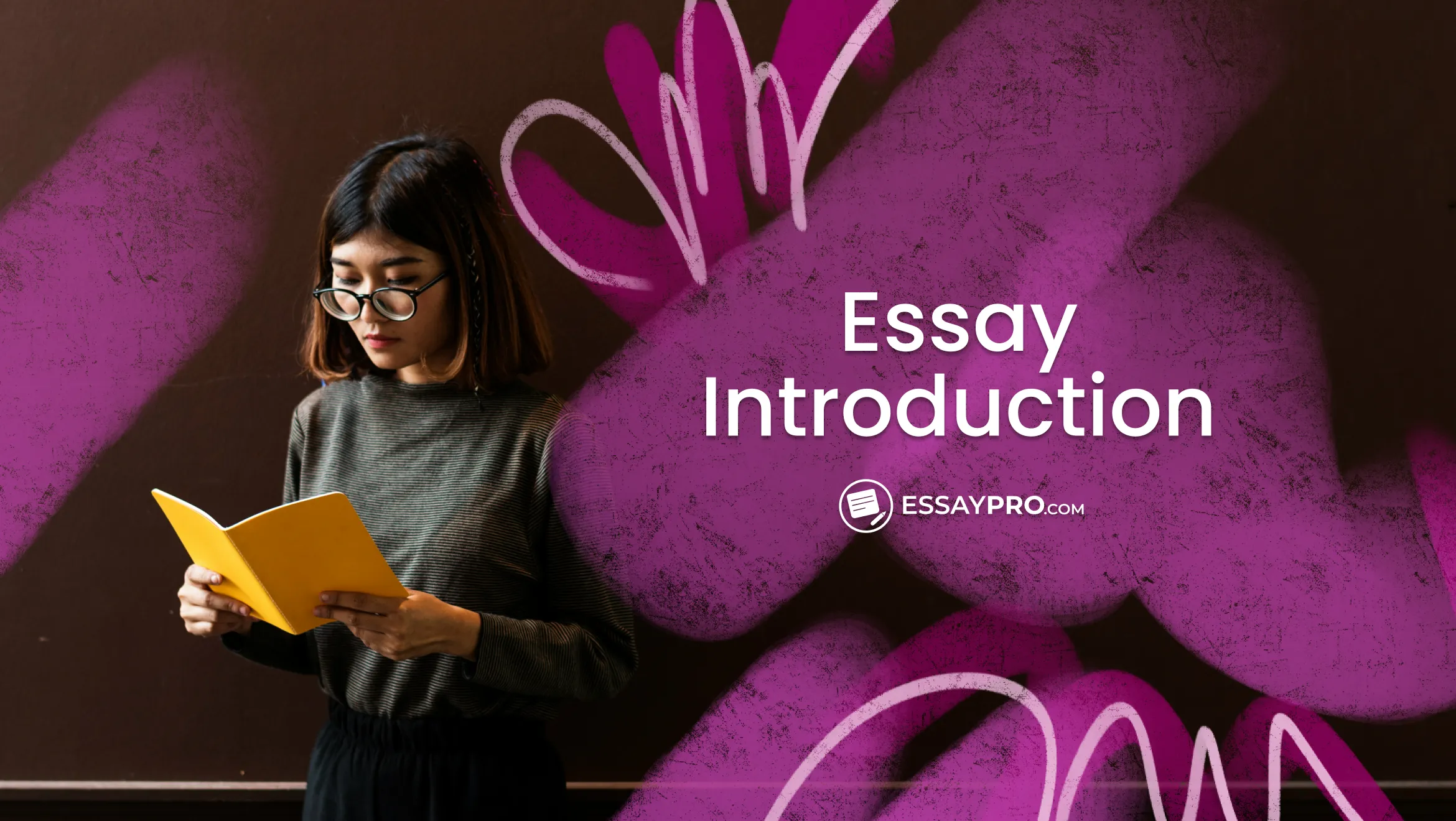On average, a person says about 7,000 words every day. However, what really forms our speech is not really about words, but rather about sentences and how we use them.
We use different types of sentences in both written and oral speech. Each type serves a specific designated purpose, and, though you may not realize it, all sentence types are different from one another.
How many types of sentences exist in the English language? What are their purposes and how is each formed? Knowing the answers to these questions is important. You will be able to bring your writing skills to a whole new level, and make your speech more thoughtful, effective, and purposeful — which is especially important for students. In this article, the EssayPro research paper writing service has made a comprehensive guide on the different types of sentences and their characteristics.
What Are the Four Types of Sentences?
In the English language, we can identify four types of sentences. They are classified based on their purposes:

- The declarative sentence type is used for making a statement;
- The interrogative type is used to ask a question;
- Imperative sentences are used to tell somebody to do something (i.e. give a command or an order);
- The exclamatory type is used to express (e.g. surprise).
Apart from their purposes, these sentence types require the use of different punctuation marks. Also, if we are talking about oral speech rather than writing, every type uses different intonations to highlight their purposes.
In the chart below, you can find a short overview of all these types with their key characteristics from our dissertation writing services:
Now, when you have grasped the general idea, let’s take a close look at each sentence type separately.
Also, read our: PUNCTUATION GUIDE to bring your writing skills to a whole new level.


Declarative Sentence
What is a declarative sentence? The main goal of this type of sentence is to make a statement. So, in a nutshell, any sentence that tells us something can be attributed to this category. It doesn’t matter what kind of information it delivers, whether it is a proven fact or a theoretical statement, the only thing that matters is if it declares something – if it does, it is a declarative sentence.
The standard order of words in such sentences is as follows:
- Subject + verb + object… = where the subject is usually a noun or pronoun (a person, thing, place, etc.); the verb is the action or state of being; and the object is any word (or multiple words) that are influenced by the verb.
Example: The girl (subject) lost (verb) her favourite doll (object).
As a rule, a declarative sentence ends with a period. Sentences that fit the definition for being of declarative type, can be further categorized into two groups – positive and negative. Respectively, the difference between them is whether you intend to make a positive or negative statement:
Where are declarative sentences used most often, you might ask? This type of sentence is the most common type of sentence. We use it in oral and written speech whenever we intend to share some information. Therefore, declarative sentences are widely used in all types of academic papers, written documents, dialogues, etc.
Interrogative Sentence
What is an interrogative sentence? A declarative sentence aims to share information, whereas an interrogative one strives to receive information. According to the interrogative sentence definition, any sentence that asks a question can be attributed to this category and will always end with a question mark.
Unlike the other types of sentences, interrogative sentences have a different word order:
(wh-word or how) + auxiliary verb + subject
Example: Where (wh-word) is (auxiliary verb) Kate (subject)?
Similar to other types of sentences, interrogative sentences can be either positive or negative. Here are a few interrogative sentence examples of both:
Where can you use this type of sentence? Generally, interrogative sentences can have a variety of applications in your speech. However, when it comes to writing, especially academic papers, questions don’t always fit in context. For example, if you write a narrative essay, you will likely not be required to ask questions, as the purpose of a narrative essay paper is to provide information, not to collect it. Interrogative sentences are more commonly used in persuasive essays to encourage readers to reflect upon or reinforce the effect of the author’s arguments (e.g. “Did you know that…?”).
Need to buy essay online? Leave us a message and we'll help asap.
Imperative Sentence
What is an imperative sentence? The main goal of these sentences is to tell others to do something, or, in other words, give a command. Imperative sentences can end with either a period or an exclamation mark.
The word order and form of such a sentence are different from other types. It often doesn’t have a subject, because an imperative sentence, by default, speaks to the recipient or reader (if it is a written text). Generally, such sentences consist of a base verb + any additional details.
These sentences can also be negative and positive, here are a few imperative sentence examples to help you grasp the idea:
As for possible applications of imperative sentences, they are mostly used in oral speech, or, if we are talking about writing, can be used in dialogues between characters, or in the form of a “call to action” that encourages readers to do something.
Exclamatory Sentence
What is an exclamatory sentence? The last of the four sentence types is the exclamatory sentence. It is used to express a strong surprise of emotion and always ends with an exclamation mark.
Here are a couple of examples of how the basic order of words in such sentences might look:
- What (+ adjective) + noun + subject + verb
- How (+ adjective/adverb) + subject + verb
For example: What wonderful (adjective) weather (subject)! or How generous (adjective) you (subject) are (verb)!
Unlike previous types, exclamatory sentences do not have a negative form.
Look at these exclamatory sentence examples to see how they are formed:
- What a beautiful painting!
- I feel terrible!
- What an excellent idea it was to throw him a surprise party!
- How nice it was!
Exclamatory sentences express powerful emotions, and, respectively, strive to evoke the same emotions in readers. In many cases, using this type of sentence in academic papers is inappropriate. However, if you are writing a descriptive or narrative essay, exclamatory sentences are great tools for helping your story to become even more vivid by delivering the right emotions to the reader.
Extra Tips on Variety
What is the key to having the perfect writing style? Some may say it is a solid vocabulary, others may not and suggest that it is being able to include an abundance of details. Furthermore, people might suggest that it is the number of ideas, examples, and arguments you include in your writing. But, if you put it all together, it turns out that the true key to literary mastery is variety!

So, here is our best tip for empowering your writing – add more variety. It may seem a bit tricky at first. But, as soon as you fully understand the concept behind every sentence type and get a bit more comfortable with each, you can try experimenting with them.
Here are some of the best tips on how you can use different types of sentences to your benefit in writing:
- Make a hook with a question. The introduction of a paper should be intriguing and engaging to make the reader want to continue reading. A good way to draw attention is to put a hook, in the form of a question, at the beginning of your introduction.
Example: “Have you ever thought how much benefit school uniforms can bring to students?”
- Use imperative sentences to establish the right guidance. The right command, presented in the right tone, can have a powerful effect on readers and stimulate their interest.
Example: “The way people thought of uniforms in schools has often been controversial. Some like the idea of it, while others don’t. However, studies show that uniforms have more pros than cons. Get ready to change your opinion!”
- Try different word orders. Although we have shared some basic formulas for shaping sentences with you in this article, they don’t necessarily always have to follow the “subject + verb” scenario. In fact, changing the order of words can occasionally add variety to your style and make your text look and sound better.
Example: Instead of writing - “I know what it means to be a part of a large team, so I know how hard it can be to find compromises.” Try using a different format - “Knowing what it means to be a part of a large team, I do know how hard it can be to find compromises.” See the difference?
- Use a question to summarize key points. Here’s another way to use interrogative sentences – put them at the beginning of a paragraph to create a quick summary of your ideas.
Example: “What was the result of a study on the pros of uniforms? – that’s what we are going to talk about.”
This trick will help you to create a smoother transition between paragraphs.
- Use different structures. As a rule, most writing tips say the same thing – “Keep it Simple!” While this advice makes sense, sometimes adding a bit of variety won’t hurt. To keep readers engaged, writers often use this trick. They alternate simple, compound, and complex constructions. This tip helps to significantly improve the readability of the text. The thing is that people find it hard and tiring to read the same sentence types one after another.
Feeling Overwhelmed Writing Paper on Your Own?
Simply send us your paper requirements, choose a writer and we’ll get it done fast.
What Are The Four Types Of Sentences?
The four types of sentences are:
- Declarative: These sentences make statements and end with a period.
- Interrogative: These sentences ask questions and always end with a question mark.
- Imperative: These sentences give commands or make requests and end with a period or an exclamation mark depending on the intensity.
- Exclamatory: These sentences express strong emotions or excitement and end with an exclamation mark.
Which One Of The Following Types Of Sentences Asks A Question And Always Ends With A Question Mark?
The type of sentence that asks a question and always ends with a question mark is an "Interrogative" sentence.

Daniel Parker
is a seasoned educational writer focusing on scholarship guidance, research papers, and various forms of academic essays including reflective and narrative essays. His expertise also extends to detailed case studies. A scholar with a background in English Literature and Education, Daniel’s work on EssayPro blog aims to support students in achieving academic excellence and securing scholarships. His hobbies include reading classic literature and participating in academic forums.






